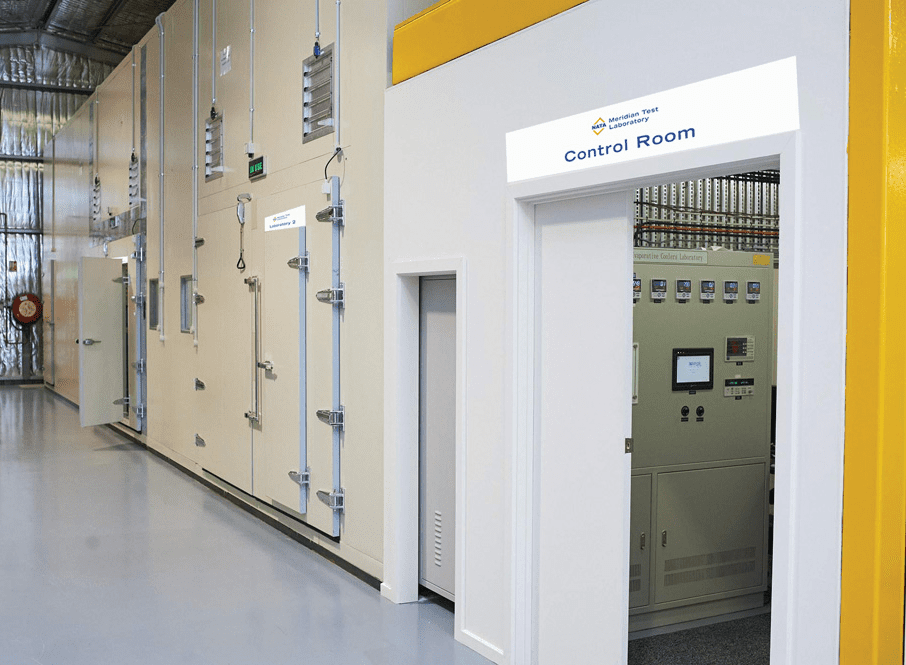Evaporative Cooler Brands & Models Compared

Testing Laboratory Overview
The NATA approved Meridian Laboratory test facility allows accurate performance testing to be conducted on competitor’s Brivis and Bonaire high-capacity products against Seeley International products. For more information on the Nata Laboratory see the Seeley International Meridian Test Laboratory.
The laboratory has two test chambers with independent control of dry bulb and wet bulb temperatures, and three nozzle boxes that allow accurate measurement of a range of airflows. To enable testing of large evaporative coolers, the laboratory also has two desiccant dehumidifiers to extract additional moisture from the test chambers. The laboratory is fully PLC controlled with electronic measurement and data acquisition of all test results. Appliance performance is calculated by measuring air conditions into and out of the appliance, airflow and power consumption.
Evaporative Cooler Testing
Technical data was first released in 2014, comparing published cooling capacity versus Meridian Laboratory tested cooling capacity, across a select range of evaporative cooler brands and models. After the test results were brought to their attention, published cooling capacity was withdrawn by Brivis and Bonaire in 20151. Brivis and Bonaire have continued to sell their products with no published cooling capacity specifications. With claimed cooling capacities no longer publicly available, the Meridian Laboratory has continued to test a select number of evaporative cooler models from 2014 to 2022 to demonstrate the differing performance by each.
Results Summary
Breezair and Braemar evaporative coolers produce up to twice the cooling capacity (kW) of selected Brivis and Bonaire models.
Choice of Coolers Tested
Highest capacity models of Bonaire and Brivis evaporative coolers were tested against a range of Breezair and Braemar models by the Meridian Laboratory. This enables consumers to compare the cooling capacity of different models, claimed to be high-capacity units, to make informed decisions for their home comfort, using actual, deliverable kilowatts cooling.
Test Conditions
- Coolers tested as new and complete units as specified by Australian Standard AS2913-2000. Cooling capacity was not determined by testing separate components.
- Coolers tested at inlet conditions of 38°C dry bulb and 21°C wet bulb and cooling capacity calculated based on room temperature of 27.4°C as specified by Australian Standard AS2913-2000.
- Cooler Airflow tested at 80 Pa Duct Static Pressure as specified by Australian Standard AS2913-2000.
- All cooler pads pre-soaked before testing.
National Association of Testing Authorities, Australia
NATA is the authority that provides independent assurance of technical competence through a proven network of best practice industry experts, for customers who require confidence in the delivery of their products and services. For more information please visit nata.com.au
- Claimed cooling capacities were calculated to industry standards in accordance with AS2913 – 2000. Source: BonaireCoolingBrochureOct2014Final-evap.pdf Claimed cooling capacities were calculated to industry standards in accordance with AS2913 – 2000. Source: brivis_brochure_evaporative_cooling 2014.pdf
- Correct at time of publication. The above data was drawn from Meridian Test Laboratory’s test analysis from 2016 – 2019. The testing was performed by a NATA accredited laboratory to the requirements of the Australian Standard AS2913-2000 “Evaporative Air Conditioning Equipment.”